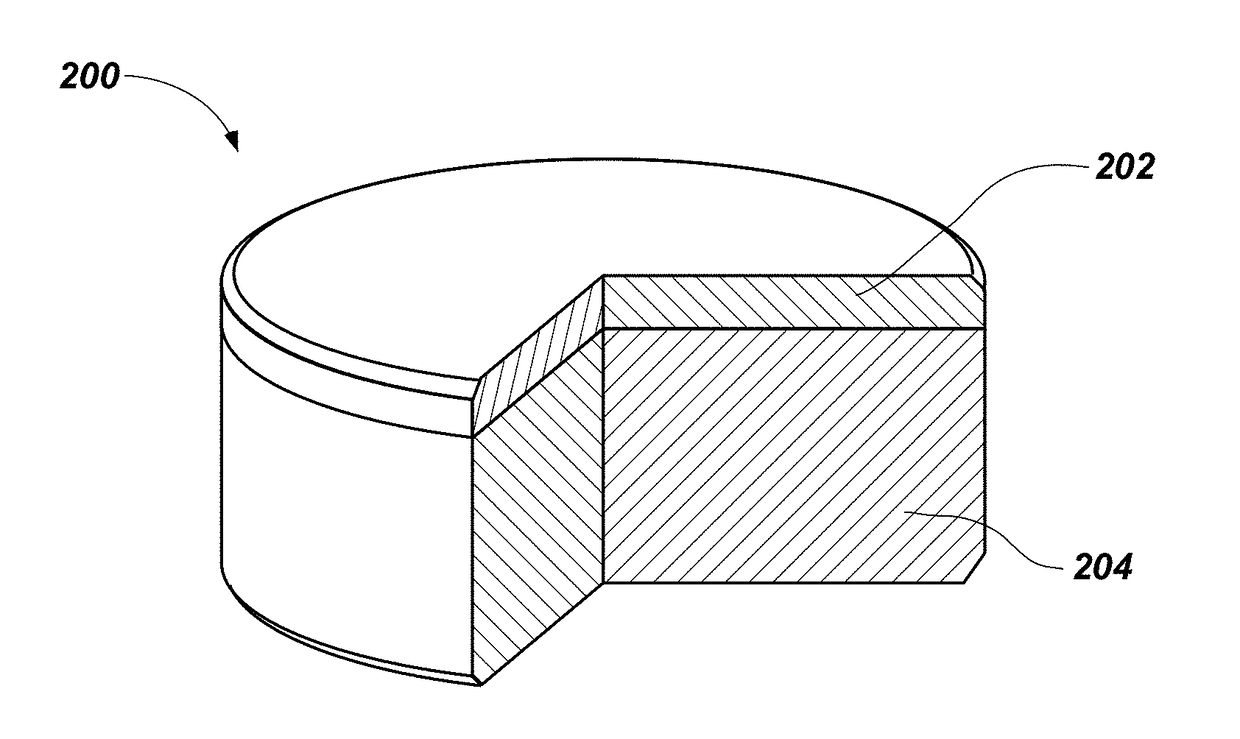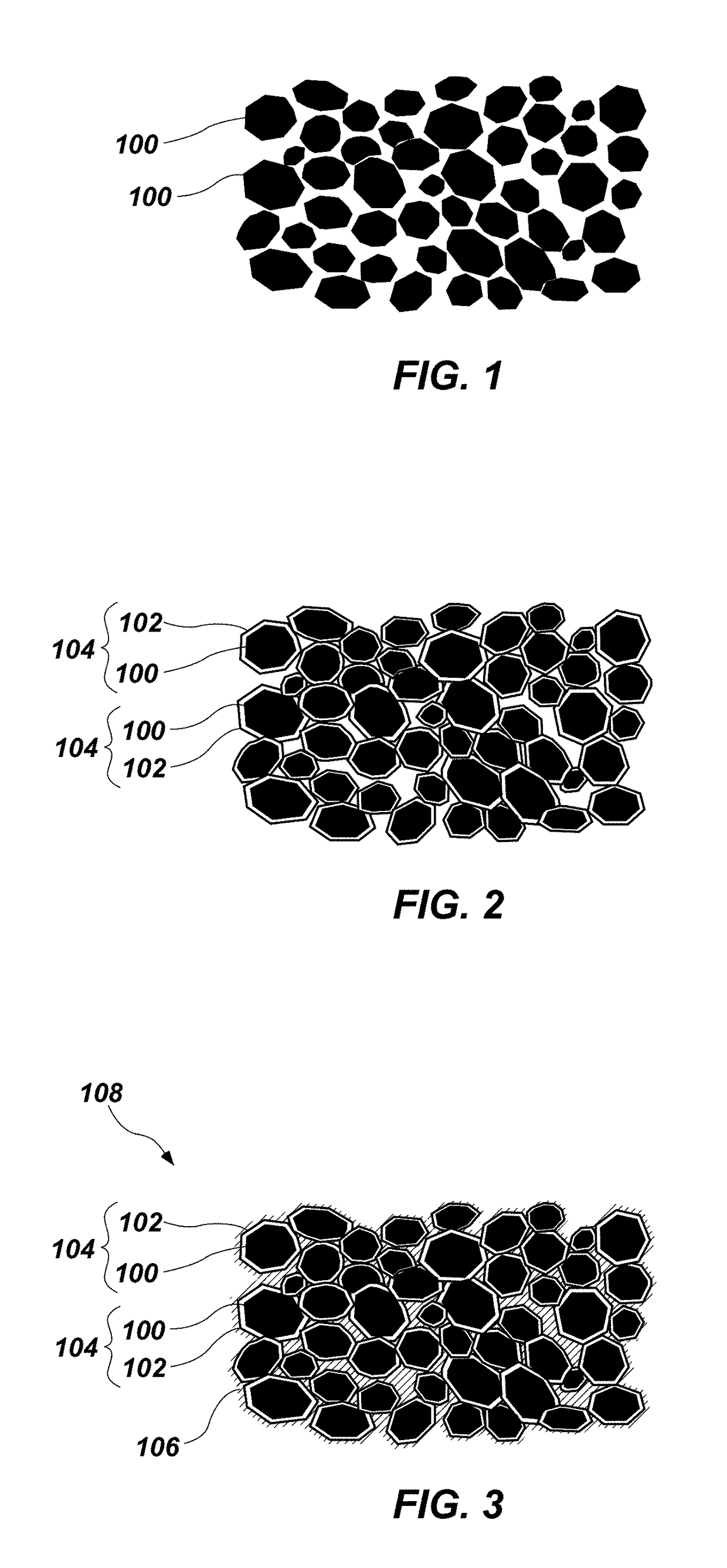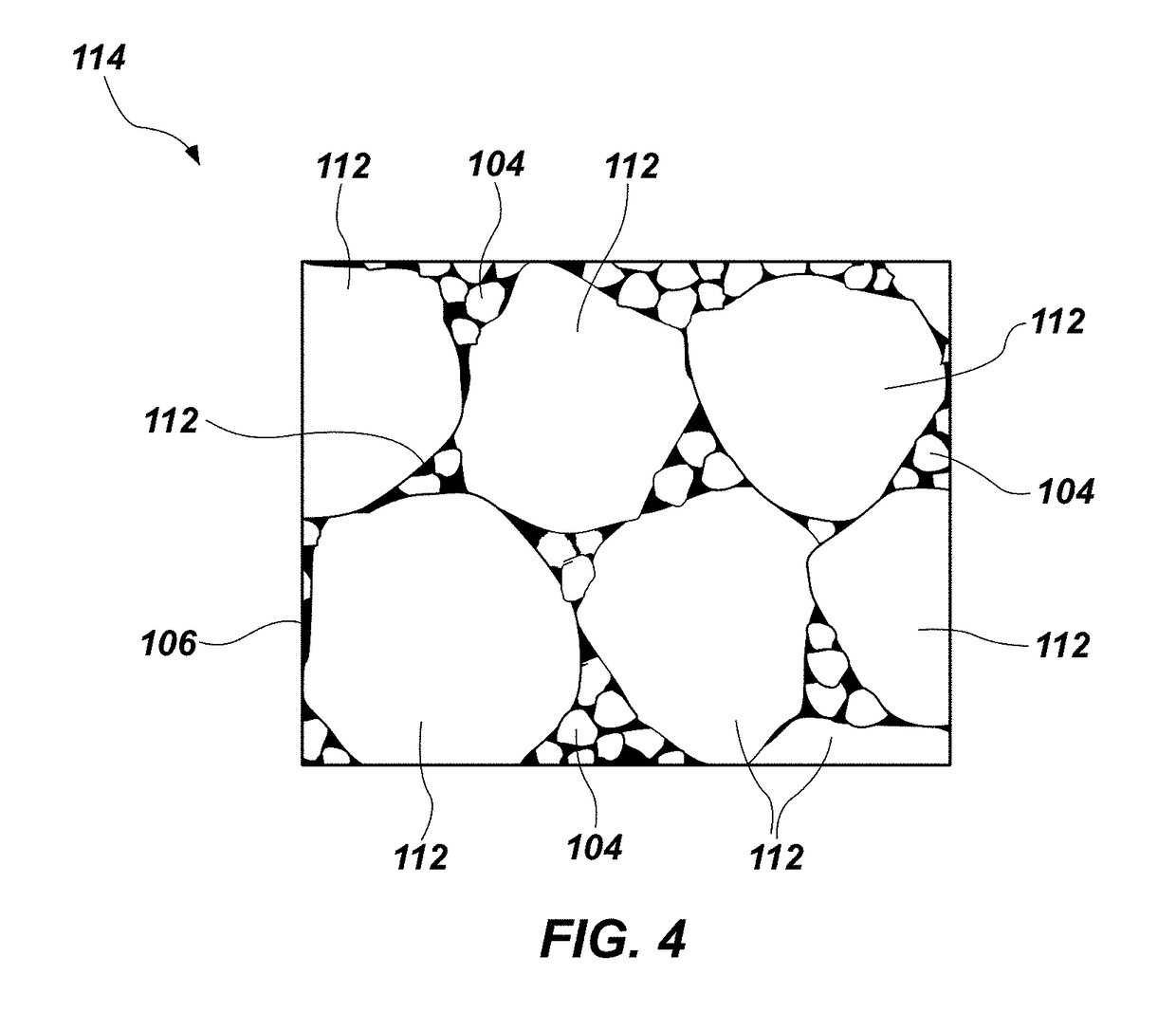Cutting elements and methods for fabricating diamond compacts and cutting elements with functionalized nanoparticles
a technology of cutting elements and nanoparticles, applied in the direction of manufacturing tools, grinding/polishing apparatus, grinding devices, etc., can solve the problems of diamond table delaminate from the substrate, diamond table thermal damage, and relatively large compressive and tensile stresses
- Summary
- Abstract
- Description
- Claims
- Application Information
AI Technical Summary
Benefits of technology
Problems solved by technology
Method used
Image
Examples
example 1
ering of Non-Fluorinated Crushed Nanodiamond
[0049]A sample of crushed nanodiamond (i.e., diamond nanoparticles) having a mean particle diameter of 90 nm was obtained from NanoDiamond Products, Ltd., of Shannon, Ireland. The crushed nanodiamond was mechanically mixed (i.e., as dry powders) with submicron aluminum powder having a mean particle diameter of 800 nm, which was obtained from US Research Nanomaterials, Inc., of Houston, Tex. The mixture was approximately 85% crushed nanodiamond and 15% aluminum. The crushed nanodiamond and aluminum were subjected to HPHT sintering at a maximum pressure of 8.0 GPa and a maximum temperature of about 1,600° C., for about 20 seconds. The microstructure of the polycrystalline diamond material was photographed by SEM, and is depicted in FIG. 7.
example 2
ering of Fluorinated Crushed Nanodiamond
[0050]A sample of crushed nanodiamond having a mean particle diameter of 90 nm was obtained from NanoDiamond Products, Ltd. The crushed nanodiamond was coated with fluorine to form covalent C—F bonds on surfaces of the nanodiamond by exposing the crushed nanodiamond to fluorine gas (F2) at a temperature of 340° C. for 300 minutes. The crushed nanodiamond was mechanically mixed (i.e., as dry powders) with submicron aluminum powder having a mean particle diameter of 800 nm, which was obtained from US Research Nanomaterials, Inc. The mixture was approximately 85% fluorinated crushed nanodiamond and 15% aluminum. The fluorinated crushed nanodiamond and aluminum were subjected to HPHT sintering at a maximum pressure of 8.0 GPa and a maximum temperature of about 1,600° C., for about 20 seconds. The microstructure of the polycrystalline diamond material was photographed by SEM, and is depicted in FIG. 8.
[0051]A comparison of the SEM images of FIGS. 7...
example 3
ering of Fluorinated Crushed Nanodiamond for 30 Seconds
[0052]Two samples of fluorinated crushed nanodiamond and aluminum were prepared as in Example 2. The samples were sintered together at a maximum pressure of 8.0 GPa and a maximum temperature of about 1,600° C., for about 30 seconds. The samples were tested by X-ray diffraction (XRD) to determine chemical composition, with the resulting XRD spectrum shown in FIG. 9. The peak at 2Θ=25 indicates that each of the sintered samples contained aluminum fluoride (AlF3). No aluminum carbide (Al4C3) was detected in these samples. The diamond peaks are narrow, indicating that the particles of diamond had uniform, near-perfect crystalline structure.
[0053]In the middle of the samples, the color of the material at the cleavage point appeared white, and included particles having micron sizes. At the ends of the sample (portions that experienced lower maximum temperatures than the middle), bright spherical zones of growth and enlargement of nano...
PUM
| Property | Measurement | Unit |
|---|---|---|
| pressure | aaaaa | aaaaa |
| temperature | aaaaa | aaaaa |
| diameter | aaaaa | aaaaa |
Abstract
Description
Claims
Application Information
 Login to View More
Login to View More - R&D
- Intellectual Property
- Life Sciences
- Materials
- Tech Scout
- Unparalleled Data Quality
- Higher Quality Content
- 60% Fewer Hallucinations
Browse by: Latest US Patents, China's latest patents, Technical Efficacy Thesaurus, Application Domain, Technology Topic, Popular Technical Reports.
© 2025 PatSnap. All rights reserved.Legal|Privacy policy|Modern Slavery Act Transparency Statement|Sitemap|About US| Contact US: help@patsnap.com



